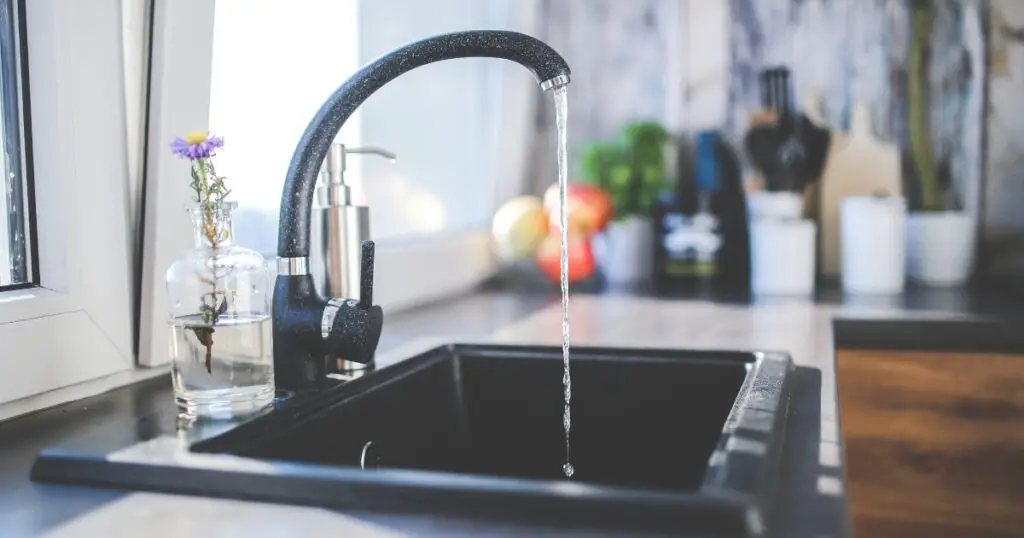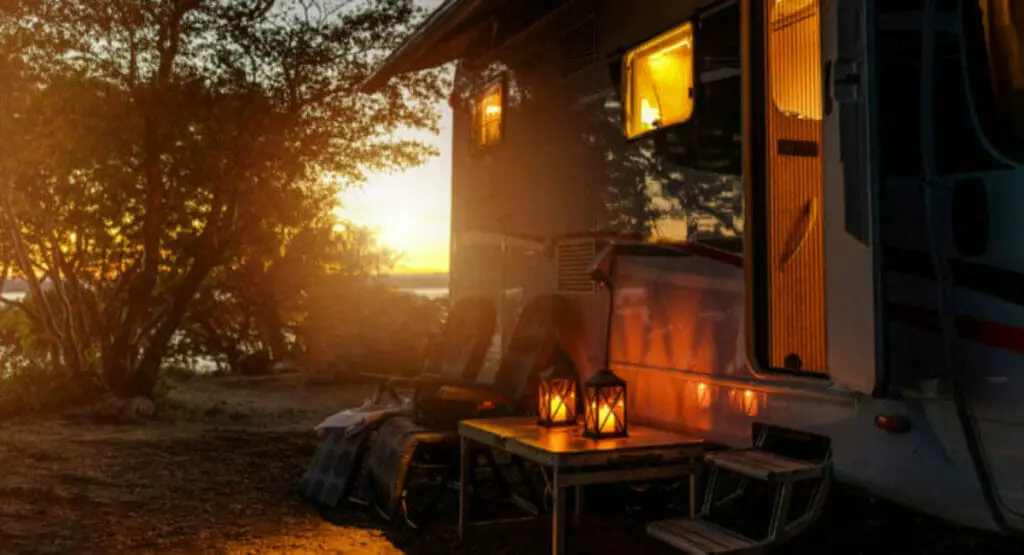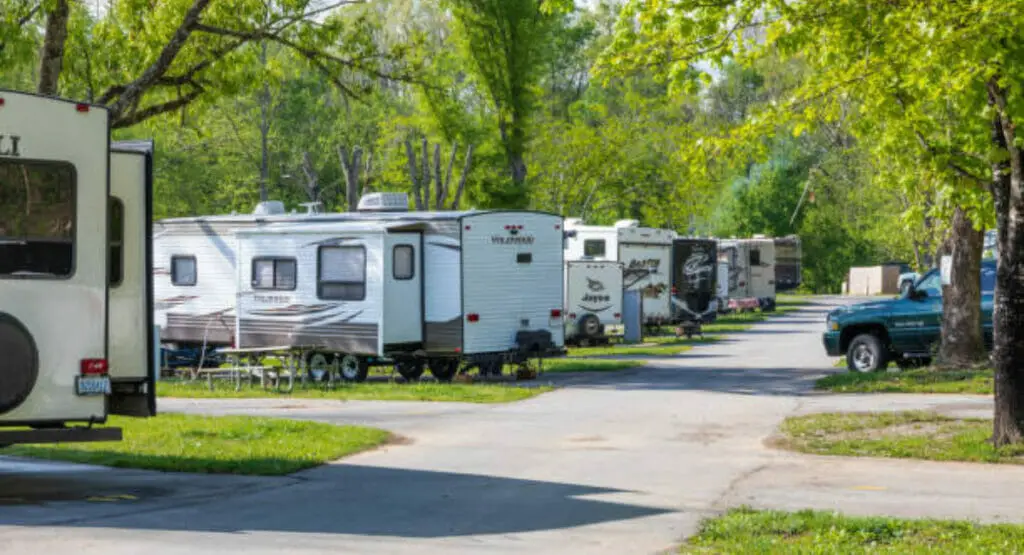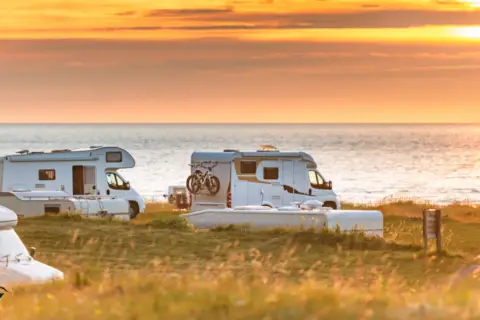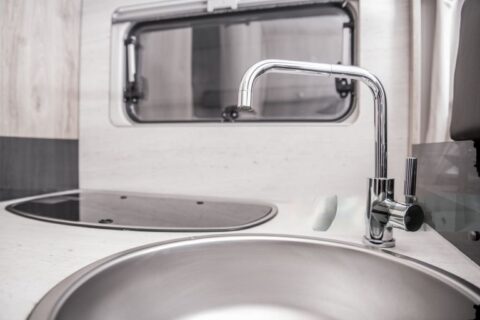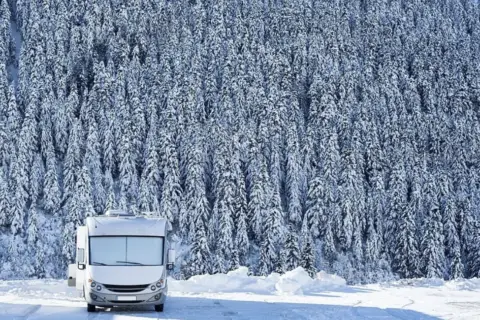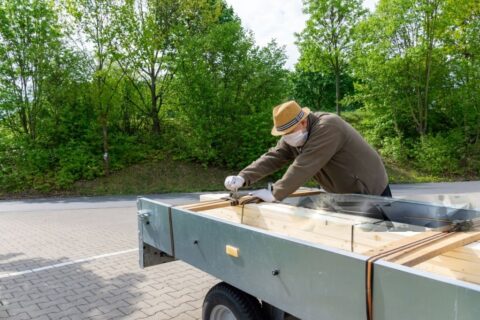To keep the water in RV freshwater systems clean and safe for drinking and other applications, sanitization is periodically required. To get rid of any built-up bacteria and mineral deposits from pipes, tanks, and faucets, the procedure involves using a sanitizing solution and running it through the system. Regular sanitization is necessary to prolong the life of the system’s components and stop the spread of dangerous microorganisms. Either the RV owner or a qualified service expert can complete it.
Here are the steps to sanitize your RV’s fresh water system without using bleach:
Step 1: Empty the fresh water tank:
Make sure the tank is completely empty by using all the water in it or draining it out.
Step 2: Fill the tank with a sanitizer solution:
Use a non-toxic sanitizer, such as white vinegar or hydrogen peroxide, to fill the tank. The recommended ratio is 1 cup of sanitizer for every 15 gallons of tank capacity.
Step 3: Run the solution through the system
Turn on the pump and open all the faucets in the RV to allow the sanitizer solution to circulate through the entire system, including the pipes, faucets, and hot water heater.
Step 4: Let the solution sit
Close all the faucets and let the solution sit in the system for at least an hour.
Step 5: Flush the system
Open the faucets and run the solution through the system until the water runs clear. This helps remove any residue from the sanitizer and ensures that the water is safe to drink.
Step 6: Refill the tank with fresh water
Fill the tank with fresh water and repeat steps 3–5 one more time to flush the system.
Step 7: Enjoy clean and safe water.
Your RV’s fresh water system is now sanitized and ready to use.
Make sure to follow the instructions on the sanitizer product you are using and always wear protective gloves and goggles when handling sanitizer solutions.
Why Should You Sanitize Your RV’s Fresh Water System?
To ensure clean drinking water and other uses, it’s crucial to clean and sanitize your RV’s fresh water system. Over time, minerals and bacteria can accumulate in the system’s pipes, tanks, and faucets, promoting the development of potentially harmful microorganisms. This may lead to health problems, unpleasant tastes and odors, and perhaps a shorter lifespan for the components of your system. Regular sanitization ensures a clean and safe water supply while removing mineral and bacterial buildup, which helps to prevent these problems. Whether you do it yourself or hire a professional, it is crucial to routinely sanitize your RV’s fresh water system to ensure that it is working properly and supplying clean, safe water for you and your family.
Different Methods To sanitize RV Fresh Water System
Here are some common ways to sanitize your RV’s fresh water system:
Chlorine bleach
A solution of 1/4 cup of household bleach per 15 gallons of water can be used to sanitize the system.
White Vinegar
Use a solution of 1 cup of white vinegar per 15 gallons of water to sanitize the system.
Hydrogen peroxide:
A solution of 3% hydrogen peroxide can be used to sanitize the system, with a recommended ratio of 1 cup per 15 gallons of water.
Commercial sanitizers
There are also commercial sanitizers specifically designed for RV water systems, which can be found at RV supply stores or online.
Whichever technique you pick, make sure to follow the directions properly and always use safety gloves and eyewear while handling sanitizing solutions. Additionally, it’s vital to properly flush the system after sanitizing to get rid of any leftover sanitizer.
conclusion
Sanitize RV fresh water system without bleach with a specific solution or baking soda and white vinegar. Both methods have a good chance of eliminating germs and making sure the water in the system is safe to drink. However, in order to guarantee that the system is completely cleaned, it is imperative to adhere to the manufacturer’s recommendations and instructions. Regular cleaning and sanitizing of the fresh water system may help avoid the formation of hazardous germs and guarantee that the water you are using is safe and clean.

